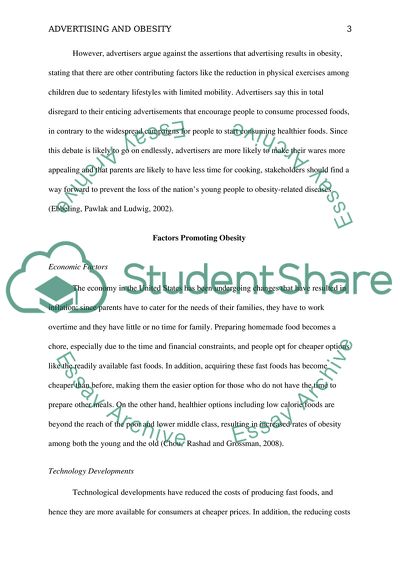Cite this document
(The Connection between Advertising and Childhood Obesity Research Paper, n.d.)
The Connection between Advertising and Childhood Obesity Research Paper. Retrieved from https://studentshare.org/health-sciences-medicine/1768910-the-connection-between-advertising-childhood-obesity
The Connection between Advertising and Childhood Obesity Research Paper. Retrieved from https://studentshare.org/health-sciences-medicine/1768910-the-connection-between-advertising-childhood-obesity
(The Connection Between Advertising and Childhood Obesity Research Paper)
The Connection Between Advertising and Childhood Obesity Research Paper. https://studentshare.org/health-sciences-medicine/1768910-the-connection-between-advertising-childhood-obesity.
The Connection Between Advertising and Childhood Obesity Research Paper. https://studentshare.org/health-sciences-medicine/1768910-the-connection-between-advertising-childhood-obesity.
“The Connection Between Advertising and Childhood Obesity Research Paper”, n.d. https://studentshare.org/health-sciences-medicine/1768910-the-connection-between-advertising-childhood-obesity.


